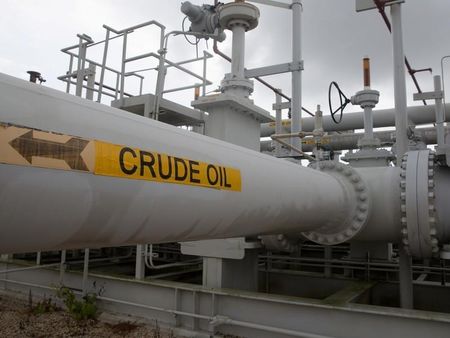Commodities
Crude oil edges higher; tone constructive despite weak Chinese data

Investing.com — Oil prices edged higher Monday, continuing the previous week’s upbeat note despite some bumpy data out of China, the world’s biggest importer.
By 08:35 ET (12.35 GMT), the futures traded 0.5% higher at $78.41 a barrel and the contract climbed 0.4% to $82.97 a barrel.
Gains follow a winning week
The crude benchmarks recorded a winning week last week, their first in four weeks, buoyed by expectations that the Northern Hemisphere summer vacation season will boost fuel demand this summer.
The monthly reports by both the and the , released last week, had pointed to inventories being drawn down in the second half of the year, even as they differed about the level of demand growth.
China data largely disappoints
That said, this positive tone has been tested by uneven economic data out of China, pointing to a stuttering recovery in the second largest economy in the world.
came in ahead of expectations in May, helped by a holiday boost, but May grew 5.6% from a year earlier, slowing from the 6.7% pace in April and below expectations for a 6.0% increase.
Additionally, crude oil refinery output in China fell 1.8% year-on-year in May, primarily due to planned/unplanned maintenance outages and curtailed processing rates on account of higher crude oil prices and lower margins.
Middle East tensions provide support
Providing a degree of support were the continued concerns of a wider Middle East war, after the Israeli military said on Sunday that intensified cross-border fire from Lebanon’s Hezbollah movement into Israel could trigger serious escalation.
Additionally, weekly data from showed that U.S. oil rigs fell by four rigs for a third straight week over the last week, with the total oil rig count reaching 488 for the week ended 14 June 2024.
“This is the lowest number of active oil rigs since the first week of January 2022, and is down by 64 rigs from a year ago,” analysts at ING said, in a note, pointing to weaker supply going forward.
There is little on the energy calendar this week – just the usual weekly U.S. inventory reports from the and the .
Traders are also likely to pay attention to speeches from a number of Federal Reserve officials as they try to judge the likely path of U.S. interest rates this year, given the likely impact of this on activity in the world’s largest economy.
Commodities
Oil prices rise; U.S. crude inventories plunge, Russia-Ukraine truce eyed
Commodities
India’s Reliance to stop buying Venezuelan oil over US tariffs, sources say
Commodities
Oil prices climb on Venezuela supply worries

 Forex3 years ago
Forex3 years agoForex Today: the dollar is gaining strength amid gloomy sentiment at the start of the Fed’s week

 Forex3 years ago
Forex3 years agoUnbiased review of Pocket Option broker

 Forex3 years ago
Forex3 years agoDollar to pound sterling exchange rate today: Pound plummeted to its lowest since 1985

 Forex3 years ago
Forex3 years agoHow is the Australian dollar doing today?

 Cryptocurrency3 years ago
Cryptocurrency3 years agoWhat happened in the crypto market – current events today

 World3 years ago
World3 years agoWhy are modern video games an art form?

 Commodities3 years ago
Commodities3 years agoCopper continues to fall in price on expectations of lower demand in China

 Economy3 years ago
Economy3 years agoCrude oil tankers double in price due to EU anti-Russian sanctions























